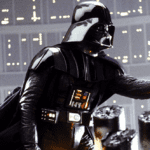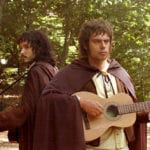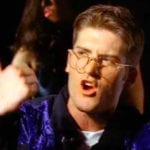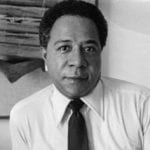 Technology
Technology  Technology
Technology  Movies and TV
Movies and TV 10 Film Shoots That Almost Ended in Disaster
 Politics
Politics The 10 Most Bizarre Presidential Elections in Human History
 Weird Stuff
Weird Stuff 10 Eggs-traordinarily Odd Eggs
 History
History 10 Desperate Last Stands That Ended in Victory
 Animals
Animals Ten Times It Rained Animals (Yes, Animals)
 Mysteries
Mysteries 10 Devastating Missing Child Cases That Remain Unsolved
 Creepy
Creepy 10 Scary Tales from the Middle Ages That’ll Keep You up at Night
 Humans
Humans 10 One-of-a-kind People the World Said Goodbye to in July 2024
 Movies and TV
Movies and TV 10 Holiday Movies Released at Odd Times of the Year
 Technology
Technology Making 10 Common Products from Very Unusual Sources
 Movies and TV
Movies and TV 10 Film Shoots That Almost Ended in Disaster
 Politics
Politics The 10 Most Bizarre Presidential Elections in Human History
Who's Behind Listverse?

Jamie Frater
Head Editor
Jamie founded Listverse due to an insatiable desire to share fascinating, obscure, and bizarre facts. He has been a guest speaker on numerous national radio and television stations and is a five time published author.
More About Us Weird Stuff
Weird Stuff 10 Eggs-traordinarily Odd Eggs
 History
History 10 Desperate Last Stands That Ended in Victory
 Animals
Animals Ten Times It Rained Animals (Yes, Animals)
 Mysteries
Mysteries 10 Devastating Missing Child Cases That Remain Unsolved
 Creepy
Creepy 10 Scary Tales from the Middle Ages That’ll Keep You up at Night
 Humans
Humans 10 One-of-a-kind People the World Said Goodbye to in July 2024
 Movies and TV
Movies and TV 10 Holiday Movies Released at Odd Times of the Year
Top 10 Greatest Piano Concerti
A piano concerto is a composition in which a solo piano (or harpsichord) is accompanied by a large ensemble of other instruments (usually a full orchestra but not always). This list looks at 10 of the greatest (with an additional bonus entry from JFrater). The criteria for inclusion and ranking of entries are musical artistry, technical artistry, pianistic power, balance between piano and orchestra, and historical influence.
Possibly Rachmaninoff’s most famous piece, along with his Prelude in C# minor (which he actually got tired of performing in public). Rachmaninoff is one of the few classical composers in history who was a genuine triple threat: world-class composer, performer, and conductor. Thus, when it came to composing for his own instrument, he didn’t pull any punches. He knew what a classically-trained pianist should be able to do, and with gigantic hands that could stretch a 13th on the keyboard (the average man’s hand can barely manage a 10th), he incorporated a lot of equally gigantic chords in his music. This concerto begins with a driving, very atmospheric, almost dirge-like melody. As is typical of his works, the last movement winds up with a pulse-pounding moment of elation.
These 10-fingered chords are one of the primary calling cards of his music, one of the reasons you can recognize his music after only a few measures. His 2nd concerto was his first outstanding work in a long time, after a series of mediocre efforts, and this mediocrity was driving him to depression because he knew he was much better than the critics would have him believe. They lambasted his 1st concerto. His 1st symphony was notably derided by Cesar Cui, of the Russian “Big Five,” who claimed it could only be enjoyed by terrible musicians who died and went to Hell where they would have to listen to it forever.
Rachmaninoff was sensitive to criticism, and such comments, echoed by Leo Tolstoy (who also considered Beethoven horrible), coupled with the sudden suicide of Rachmaninoff’s mentor and friend, Tchaikovsky, drove him into 3 years of clinical depression and writer’s block. He finally overcame it with the help of Nicolai Dahl, who hypnotized him and repeated over and over, “You are a great composer. You will compose great music.”
It is not a bit of a cheat to include this one, since although Bach wrote it for the harpsichord (because the piano had only recently been invented and was not yet a very good instrument), it is today played at least as frequently on piano. That is one of the most amazing aspects of Bach’s music, and a brilliancy no other composer can claim: his music can be played just as effectively on any instrument combination; no musicality is lost; his is, thus, the purest music anyone has ever written, and if the percussive quality of the piano were not taken into account, this one would top the list.
Bach originally scored it for solo violin, and later re-scored it for keyboard. As is typical of his music, it is extremely complex, with polyphonic harmony of the highest order, and severe technical demands, which Bach could dash off with polished artistry. It also deserves a spot on the list because it is the first truly solo concerto, at least in the spirit of the soloist being able to show off.
This one has the distinction of being first played by Franz Liszt himself. Not in public, but when Grieg brought it to him for his approval. Liszt and he met in 1870 in Rome, and Liszt asked him to play it, but Grieg said that he had not yet practiced it, so Liszt sightread the entire thing, even playing the orchestral parts.
Liszt immediately complimented him highly, especially for the g-sharp in the final scale run at the end of the 1st movement. It is one of the most popular concerti today, being fairly easy to perform compared to the others on this list, and in the relative minor of C Major. This key enables the music to make excellent use of the lowest note on the piano. The 2nd movement is one of the most beautiful ever written, and a piece of which Grieg was particularly proud. He intended it to remind the listener of a verdant waterfall.
Even today, there are quite a few critics and musicologists, as well as performers, who consider this Beethoven’s finest concerto. This lister is not so convinced, but what Beethoven does brilliantly in this one is pristine balance of melody, development, technique, musicality, and balance between soloist and orchestra.
Beethoven is known for short motif-like themes, which he could develop into the highest form of music better than just about anyone. He made much out of little. But now and then, as with his his “Ode to Joy,” he could dream up a melody just as lyrical as those of Mozart. The same is true of this concerto, and yet proper development of such lyrical melodies is extremely difficult for composers to muster, as the history of music bears out. Mozart was of the opinion that if you can compose a good melody, the hard part is over. Whenever excellent melody and excellent development meet, it’s a masterpiece, and that is precisely why this concerto is one.
The most notable moment in it is in the cadenza at the end of the 2nd movement. Beethoven wrote this one himself, but left the cadenza of the 1st movement to be improvised by the performer. He marked the 2nd movement’s cadenza “una corda.” On today’s pianos, we call this the soft pedal, which shifts the hammers from all three strings of each note to just one of each. But in Beethoven’s day, this pedal actually shifted the hammers to one or two of each note’s three strings, at the composer’s discretion, and he indicated the cadenza to make full use of this ability, “due e poi the corde (two and then three strings)” during the opening trill, and “due poi una corda (two then one string)” during the end. Today, it can only be done on a period piano of Beethoven’s time.
Today, this may possibly be the most famous concerto on this list, ever since Liberace practically used it as his theme song for years, even playing the opening overture on giant piano keys around the side of his swimming pool. Tchaikovsky could play the piano, but was not well-practiced enough to perform this piece. For a supreme composer, this is no crutch. Like all the greats, Tchaikovsky wrote at a writing desk, not seated at a piano.
This concerto was very daring for its day, especially since Tchaikovsky dedicated it to his friend and magnificent piano legend Nikolai Rubinstein, the brother of an even greater pianist, Anton. Nikolai was an absolute master of Mozart’s piano music, and his playing style could not have been more perfectly suited to such cheerful, technically refined works. Anton was the one who broke strings when he practiced.
This concerto would have been perfect, therefore, for Anton to premiere, but Tchaikovsky was closer to Nikolai and Nikolai almost always premiered his new works. Unfortunately, when he read the score, he threw it down in disgust and proceeded to criticize Tchaikovsky harshly for what he termed “a concerto against the piano.” It was far too bombastic for his taste. Tchaikovsky was, of course, offended by this, but years later Nikolai approached him and asked for forgiveness, explaining that it had taken him that long to warm up to it. After that, he performed it all the time.
It has the single most famous passage of octaves in the piano repertoire, in the 1st movement. It takes a true musician to play them correctly but not to show off by rushing through them. There is a second octave passage in the 3rd movement. The most famous part of the entire piece, though, is the opening, an ecstatic revelry of ultra-romantic music from one of the most romantic of the Romantic era. And this overture doesn’t even have the 1st melody in it. It leads to the 1st melody. The 1st movement also ends extravagantly with one of the very few instances of a 1-4-1 cadence, when 1 chords (tonic) and 5 chords (dominant) are almost all you ever hear at the end of a piece of music. The 4 chord is called the subdominant.
In terms of musicality, this one would rank second on this list behind #9, but we are equally examining all aspects of the piano concerto, and in terms of pianistic power, this concerto is quite a sweetheart. Mozart is not known for bombastic music, though he certainly wrote some. The phrase often thrown around (if you’ll forgive the God reference) is, “Bach gave us God’s Word. Mozart gave us God’s laughter. Beethoven gave us God’s fire.”
This concerto is typical of that carefree, happy quality for which Mozart is legendary. Nevertheless, the technicality and musicality of this one require a pianist with a finished technique, especially in presto legato fingering. The 2nd movement is used to great effect in the film “Elvira Madigan,” and now the concerto is sometimes nicknamed that. Beethoven, Haydn, and Hummel were in attendance for one or more of Mozart’s own performances of this piece, and all agreed that his technique, especially in the right hand, was faultless, with the running passages in the 3rd movement as unbroken as a river.
By far the most technically difficult concerto ever written for any instrument, requiring extreme pianistic power. Vladimir Horowitz, one of its finest recorded performers, called it “elephantine.” Just as in his 2nd Concerto, the music in this one reflects his hands, with many of the chords great big and fat.
His original cadenza for the 1st movement is filled with these massive chords and the pianist must bang the piano to death to deliver it with the proper leonine character. One of the best recordings of it is that of Lazar Berman, who did not shy away from its demands. The 1st movement builds to multiple climaxes, then dies away quietly to a lush, windy 2nd movement. Then, per his reputation, Rachmaninoff revs it up for a storming finish at the of the 3rd movement.
One of the most finely polished of this list’s entries, and the quintessential work of the Romantic piano concerto repertoire. The entire work is based on a 4-note theme. It descends in minor as the main theme of the 1st movement. In the 2nd, it ascends in major. Schumann further varies it in the third. It is, thus, something of a cyclic work, intending to explore fully all the possibilities of a melody. The most monumental cyclic work ever composed is the Art of the Fugue, by Bach, who heavily influenced Schumann.
His wife, Clara, the greatest female pianist in history, premiered this one on 1 January 1846. Grieg may have been influenced directly by it in composing his own piece, #8. Both are in the same opening key, and both begin with an orchestral chord, followed by the descending soloist. This one ranks at #3 because of its pure Romantic character, the archetype of all the 1800s, and extreme musical complexity. Combine the two and you require, as Artur Rubinstein once said, “No one younger than 40,” if you want it played effectively.
Unfortunately, Brahms himself was never recorded playing this one, but his mighty performances always brought the house down. He was short, but he was brawny and could easily impart his ample body weight into the strong passages. This concerto is today considered possibly as difficult as Rachmaninoff’s 3rd, not because of technique so much as because a diminutive pianist is at a severe disadvantage in overcoming the full orchestra.
It’s a thunderous piece all the way, in 4 movements, not 3. The 1st movement has a passage in it that sounds a lot like the Battle Hymn of the Republic, which is a total coincidence, and then it ends with a double trill flourish, in which the pianist adds another finger, then another, louder and louder as the orchestra swells, and the piano must be heard over it the whole time.
There are two stories of how it got its nickname, “Emperor.” One is that during its Vienna premiere, a French army officer remarked in the audience, “C’est l’empereur de concerti!” or “This is the emperor of concerti!” The other story, and likely the correct one, is that Beethoven’s London publicist, Johann Cramer, gave it the name.
It was premiered first on 28 November 1811 at the Gewandhaus in Leipzig with Friedrich Schneider at the keyboard. By this point, Beethoven was too deaf to perform it himself, but he certainly wanted to. He tended to play too fast from excitement. A few months later, 12-year-old Carl Czerny, pupil of Beethoven and later teacher of Franz Liszt, premiered it in Vienna. Czerny is reported to have played magnificently, and this is supported by the fact that Beethoven would not have allowed him to butcher it.
To play such a supremely difficult work of art at 12 years old is, today, almost unheard of. This was one of the first concerti, along with Beethoven’s 4th, to break with the Classical tradition of a long orchestral introduction preceding the soloist. Instead, it begins with the orchestra declaring the key and the piano fearlessly joining in with cadenza scale runs and trills.
The 3rd movement is, of course, just as fantastic as the 1st, but the 2nd is one of the most beautiful, poetic pieces of music ever written, unadulterated romance, the piano and orchestra as lovers, and by far the finest slow movement of all concerti. Rudolf Serkin has, under Leonard Bernstein’s conducting, a claim to the finest recording of it.
As a lover of contemporary and modern classical music I felt it only fitting that I add to Flamehorse’s list of concerti by including a piano concerto by my favorite composer, Alfred Schnittke. Schnittke composed in a very eclectic manner – using quotes from other great composers from the past but always adding his own flair. This concerto demonstrates that the art of concerto composing is far from dead. It is an incredibly moving and emotional piece of music. If you like this you will love everything by Schnittke. I definitely recommend you listen to more of his music.








